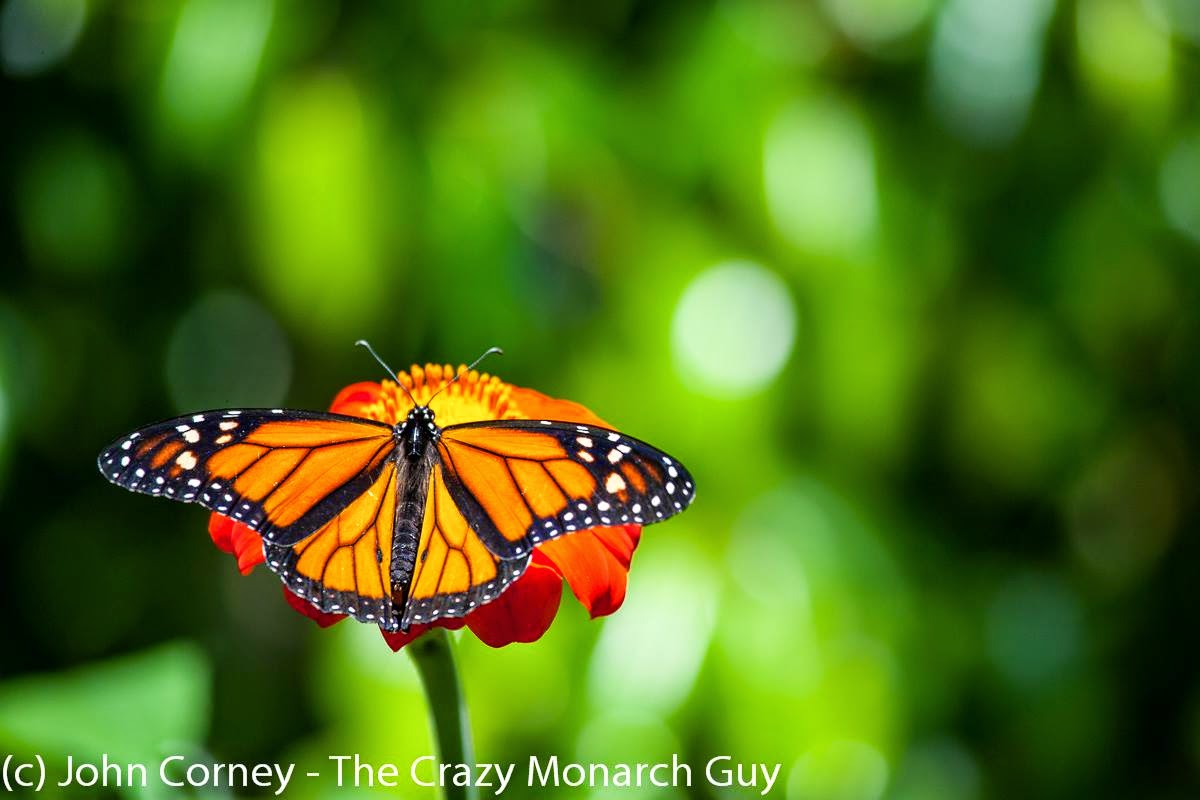Monarch caterpillar and butterfly predators
If you do even a small amount of reading about monarchs you will soon come across a statement that says predators leave monarch caterpillars alone because the milk (latex) in the sap of the milkweed plant is toxic and distasteful to predators. Don't you believe it! I have witnessed young caterpillars being carried off by wasps and swallowed whole by praying mantis right before my eyes!
From my experience, Asian paper wasps and praying mantis are both very happy to make a meal of monarch caterpillars. Lady bugs also will possibly eat the eggs.
Last summer (2013) the wasps were so efficient at picking off the young larvae that I resorted to bringing the caterpillars inside and becoming a caterpillar farmer and raising them in an aquarium. Believe me it was lots of work keeping them well fed and the aquarium clean. (By the way, there was of course no water in the aquarium - it just made the perfect lidded enclosure from which they couldn't escape).
Praying mantis also are clever enough to lie in wait right at the flowers on milkweed plants to snatch up the butterflies as they come to feed on the flowers. If you ever see 4 monarch butterfly wings on the ground with no body attached, you can be sure the butterfly was taken by a mantis. Once they grab the butterfly the first thing they do is bite off each of the 4 wings before consuming the body! A story line for a horror movie for sure!
What can you do about wasps and praying mantis? Not a lot really as you can't start spraying them with pesticides as this will also kill the caterpillars and butterflies. When I see big praying mantis lying in wait by the flowers I pick them off the plant and take them to another part of the property that is far away from the milkweed. I guess it makes me feel better, but who knows if it's very effective. If I see wasps building a nest on the house, I remove it immediately, although they obviously do not respect boundaries and will make a "bee line" for your yard from your neighbor's once they find the bountiful booty on your plants.
So other than those small steps you can just decide to accept it all as being how things work out there in the wilds of your backyard, or you can become a caterpillar farmer like I did last year. Your choice, but after one year of raising monarch caterpillars inside I have decided to retire and let nature take its course.
So far this year I have had around 100 caterpillars reach maturity and progress through to butterflies. So it's been way better than last year, but last year I didn't get my first eggs till about this time and the wasps are only just getting established again, and the praying mantises that I have seen are tiny at this stage. So predation season is not quite here yet. But think of it this way, without some predation, you will never have enough milkweed to support all the eggs that will be laid anyway.
Here's a video of life in my garden on a recent day, including an Asian paper wasp patrolling a milkweed plant.





